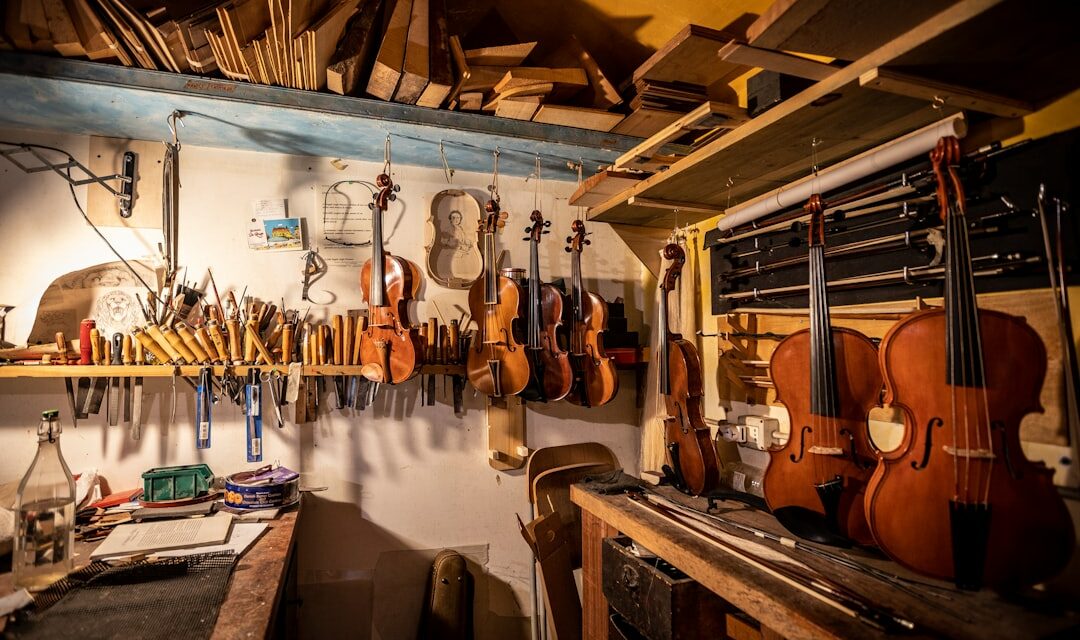Crafting, in its myriad forms, has been an integral part of human culture for millennia. From the earliest days of humankind, when our ancestors fashioned tools from stone and bone, to the intricate tapestries and ceramics of ancient civilisations, the act of creating has always been a means of expression and survival. The history of crafting is as diverse as the materials used; it encompasses everything from pottery and weaving to woodworking and metalwork.
Each culture has contributed its unique techniques and styles, reflecting the values, beliefs, and resources of its people. As societies evolved, so too did the art of crafting. The Industrial Revolution marked a significant turning point, as mass production began to overshadow traditional handmade methods.
While this shift brought about increased accessibility to goods, it also led to a growing appreciation for the unique qualities of handcrafted items. The Arts and Crafts Movement of the late 19th century emerged as a response to industrialisation, championing the beauty and integrity of handmade creations. This movement not only celebrated craftsmanship but also sought to reconnect people with the materials and processes involved in making art.
Today, crafting continues to thrive, blending traditional techniques with modern innovations, and remains a vital aspect of cultural identity.
Summary
- Crafting has a rich history dating back centuries, with various cultures contributing to its evolution.
- Handmade creations possess a unique beauty and charm that cannot be replicated by mass-produced items.
- Engaging in crafting activities can have therapeutic benefits, promoting relaxation and mindfulness.
- There are numerous crafting techniques to explore, from knitting and pottery to paper quilling and embroidery.
- Crafting is a sustainable and eco-friendly practice that promotes the use of natural materials and reduces waste.
The Beauty of Handmade Creations
Handmade creations possess an inherent beauty that often eludes mass-produced items. Each piece tells a story, imbued with the artist’s personal touch and unique vision. The imperfections found in handcrafted works—be it a slight asymmetry in a pottery bowl or the irregularities in a woven textile—add character and charm that cannot be replicated by machines.
This individuality is what draws many to handmade items; they are not merely objects but rather expressions of creativity and passion. Moreover, the aesthetic appeal of handmade creations extends beyond their physical attributes. The process of crafting itself is an art form, where the maker engages deeply with their materials, exploring textures, colours, and forms.
This intimate relationship fosters a sense of connection between the creator and their work, resulting in pieces that resonate on an emotional level with those who encounter them. In a world increasingly dominated by uniformity, the allure of handmade creations lies in their ability to evoke a sense of wonder and appreciation for the artistry involved.
Crafting as a Therapeutic Activity

In recent years, the therapeutic benefits of crafting have garnered significant attention. Engaging in creative activities has been shown to reduce stress, alleviate anxiety, and promote overall well-being. The act of crafting allows individuals to enter a state of flow—a mental state characterised by complete immersion in an activity—providing a welcome escape from the pressures of daily life.
As one focuses on the tactile experience of shaping clay or the rhythmic motion of knitting, worries often fade into the background. Furthermore, crafting can serve as a powerful tool for self-expression. For many, it provides an outlet for emotions that may be difficult to articulate verbally.
Whether through painting, sewing, or woodworking, individuals can channel their feelings into tangible forms, fostering a sense of accomplishment and empowerment. This creative process not only nurtures mental health but also encourages personal growth, as makers learn new skills and discover their unique artistic voices.
Exploring Different Crafting Techniques
The world of crafting is vast and varied, encompassing an array of techniques that cater to different interests and skill levels. From traditional methods passed down through generations to contemporary practices that push the boundaries of creativity, there is something for everyone. Techniques such as pottery allow artisans to shape clay into functional or decorative pieces, while textile arts like quilting and embroidery offer opportunities for intricate designs and storytelling through fabric.
In addition to these time-honoured methods, modern crafting has seen the rise of innovative techniques that incorporate technology. Digital fabrication tools such as laser cutters and 3D printers have opened new avenues for creativity, enabling makers to experiment with complex designs that were once unimaginable. This fusion of traditional craftsmanship with cutting-edge technology exemplifies the dynamic nature of crafting today.
As individuals explore these diverse techniques, they not only expand their skill sets but also discover new ways to express their creativity.
Crafting as a Sustainable and Eco-Friendly Practice
In an era marked by environmental concerns and a growing awareness of sustainability, crafting has emerged as a viable alternative to mass production. Handmade items often utilise locally sourced materials or repurposed goods, reducing waste and minimising the carbon footprint associated with manufacturing processes. By embracing crafting as a sustainable practice, individuals can contribute to a more eco-friendly lifestyle while also supporting local artisans and communities.
Moreover, crafting encourages mindfulness regarding consumption habits. When one invests time and effort into creating something by hand, there is a greater appreciation for the materials used and the value of craftsmanship. This shift in perspective can lead to more conscious purchasing decisions, favouring quality over quantity.
As consumers increasingly seek out sustainable options, the demand for handmade goods continues to rise, fostering a culture that prioritises environmental responsibility alongside creativity.
The Rise of Crafting Communities

The resurgence of interest in crafting has given rise to vibrant communities that celebrate creativity and collaboration. These communities often form around shared interests—be it knitting circles, pottery classes, or online forums dedicated to specific crafts—providing individuals with opportunities to connect with like-minded enthusiasts. Such gatherings foster a sense of belonging and support, allowing makers to share their knowledge, skills, and experiences.
In addition to local groups, social media platforms have played a pivotal role in connecting crafters across the globe. Online communities provide spaces for individuals to showcase their work, exchange ideas, and seek inspiration from others. This interconnectedness has not only revitalised traditional crafts but has also led to the emergence of new trends and techniques as makers draw from diverse cultural influences.
As these communities continue to grow, they reinforce the notion that crafting is not merely an individual pursuit but a collective celebration of creativity.
Crafting for a Cause: The Power of Handmade Gifts
Handmade gifts carry a unique significance that transcends their physical form; they embody thoughtfulness and care that mass-produced items often lack. When one takes the time to create something by hand for another person, it conveys a message of love and appreciation that resonates deeply. This sentiment is particularly powerful when crafting for charitable causes or community initiatives.
Many crafters dedicate their skills to support various social issues, from creating blankets for homeless shelters to knitting hats for premature babies in hospitals. These acts of kindness not only provide tangible assistance but also foster a sense of community among makers who share a common goal. By using their talents for good, crafters can make a meaningful impact while also inspiring others to engage in similar efforts.
The power of handmade gifts lies not only in their beauty but also in their ability to connect people through shared values and compassion.
Embracing Imperfection: The Charm of Handcrafted Wonders
In a world increasingly obsessed with perfection and uniformity, there is something profoundly refreshing about embracing imperfection in handcrafted works. Each handmade item carries with it the marks of its creator—the fingerprints left in clay or the slight variations in stitch patterns—reminding us that beauty often lies in authenticity rather than flawlessness. This acceptance of imperfection invites us to appreciate the journey of creation rather than solely focusing on the end result.
Moreover, this philosophy extends beyond crafting itself; it encourages a broader acceptance of imperfection in our lives. In an age where social media often promotes curated images of perfection, embracing the charm of handcrafted wonders serves as a reminder that our uniqueness is what makes us special. By celebrating the quirks and idiosyncrasies found in handmade creations, we cultivate an appreciation for individuality—both in art and in ourselves.
Ultimately, it is this embrace of imperfection that enriches our understanding of craftsmanship as an art form rooted in humanity and creativity.
Crafting Wonders explores the intricate world of art and creativity, showcasing the beauty and skill behind various artistic creations. For those interested in exploring different art movements, an interesting read would be


